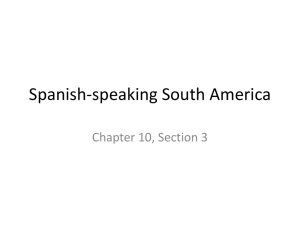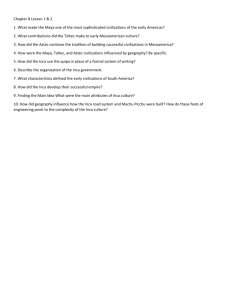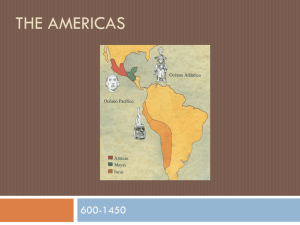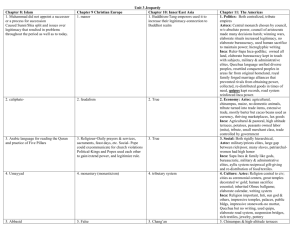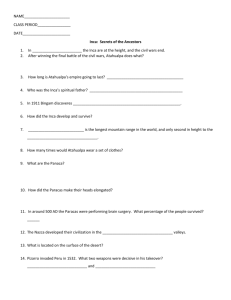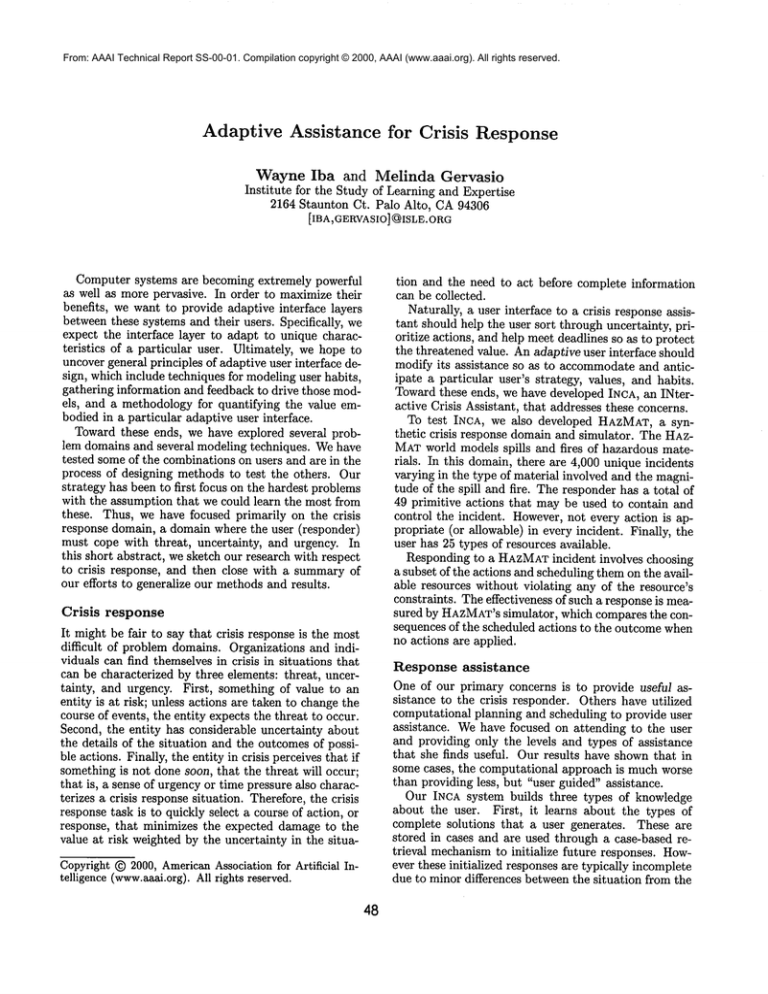
From: AAAI Technical Report SS-00-01. Compilation copyright © 2000, AAAI (www.aaai.org). All rights reserved.
Adaptive Assistance
for Crisis
Response
Wayne Iba and Melinda
Gervasio
Institute for the Study of Learning and Expertise
2164 Staunton Ct. Palo Alto, CA94306
[IBA,GERVASIO]
~ISLE.ORG
Computer systems are becoming extremely powerful
as well as more pervasive. In order to maximize their
benefits, we want to provide adaptive interface layers
between these systems and their users. Specifically, we
expect the interface layer to adapt to unique characteristics of a particular user. Ultimately, we hope to
uncover general principles of adaptive user interface design, which include techniques for modeling user habits,
gathering information and feedback to drive those models, and a methodology for quantifying the value embodied in a particular adaptive user interface.
Toward these ends, we have explored several problem domains and several modeling techniques. Wehave
tested some of the combinations on users and are in the
process of designing methods to test the others. Our
strategy has been to first focus on the hardest problems
with the assumption that we could learn the most from
these. Thus, we have focused primarily on the crisis
response domain, a domain where the user (responder)
must cope with threat, uncertainty, and urgency. In
this short abstract, we sketch our research with respect
to crisis response, and then close with a summaryof
our efforts to generalize our methodsand results.
Crisis
response
It might be fair to say that crisis response is the most
difficult of problem domains. Organizations and individuals can find themselves in crisis in situations that
can be characterized by three elements: threat, uncertainty, and urgency. First, something of value to an
entity is at risk; unless actions are taken to change the
course of events, the entity expects the threat to occur.
Second, the entity has considerable uncertainty about
the details of the situation and the outcomes of possible actions. Finally, the entity in crisis perceives that if
something is not done soon, that the threat will occur;
that is, a sense of urgency or time pressure also characterizes a crisis response situation. Therefore, the crisis
response task is to quickly select a course of action, or
response, that minimizes the expected damage to the
value at risk weighted by the uncertainty in the situaCopyright © 2000, AmericanAssociation for Artificial Intelligence (www.aaai.org).All rights reserved.
48
tion and the need to act before complete information
can be collected.
Naturally, a user interface to a crisis response assistant should help the user sort through uncertainty, prioritize actions, and help meet deadlines so as to protect
the threatened value. An adaptive user interface should
modify its assistance so as to accommodateand anticipate a particular user’s strategy, values, and habits.
Toward these ends, we have developed INCA, an INteractive Crisis Assistant, that addresses these concerns.
To test INCA, we also developed HAZMAT,
a synthetic crisis response domain and simulator. The HAZMATworld models spills and fires of hazardous materials. In this domain, there are 4,000 unique incidents
varying in the type of material involved and the magnitude of the spill and fire. The responder has a total of
49 primitive actions that may be used to contain and
control the incident. However, not every action is appropriate (or allowable) in every incident. Finally, the
user has 25 types of resources available.
Responding to a HAZMAT
incident involves choosing
a subset of the actions and scheduling them on the available resources without violating any of the resource’s
constraints. The effectiveness of such a response is measured by HAZMAT’S
simulator, which compares the consequences of the scheduled actions to the outcome when
no actions are applied.
Response assistance
One of our primary concerns is to provide useful assistance to the crisis responder. Others have utilized
computational planning and scheduling to provide user
assistance. Wehave focused on attending to the user
and providing only the levels and types of assistance
that she finds useful. Our results have shown that in
some cases, the computational approach is much worse
than providing less, but "user guided" assistance.
Our INCAsystem builds three types of knowledge
about the user. First, it learns about the types of
complete solutions that a user generates. These are
stored in cases and are used through a case-based retrieval mechanismto initialize future responses. However these initialized responses are typically incomplete
due to minor differences between the situation from the
assessment are performed independently. This structure capitalizes on the respective strengths of the user
and the system, and their synthesis leads to better responses than either could achieve on their own.
ResponseInitiation 1
and
l"
Incident Monitoring[
\
/
.[ Sohedule
/
Adaptation
II Adaptation
Plan[.
INCA
Case
Retrieva
l
incidentalarm
I
state information
and action command
Hazardous
MaterialsIncidentSimulator
l
Figure 1: Mixed-initiative response to HAZMAT
crises
involving INCAand a human user.
stored case and the new incident. Therefore, the user
will typically work from the seeded response and make
various modifications or repairs. This corresponds to
INCA’s second type of user modeling.
INCAalso learns about the specific types of repairs
to a response that a user will implement. Internally to
INCA,a selected repair action is represented by the current state of the response (which actions are scheduled
and resources allocated) and the features describing the
incident itself. Based on experience with a user over
numerous HAZMAT
incidents,
INCA forms situationaction rules that predict what repair action a given user
will initiate in a particular situation.
Finally, INCAforms a model of the user’s value function to help guide the search for a satisfactory response. Responding to a HAZMAT
incident is inherently a multi-valued tradeoff. Resources expended to
contain and control a spill or fire cost money,the material spilling and possible structures burning have economic value, and the introduction of hazardous materials into the ground water or the air through combustion
also has a particular (negative) value. In such domains,
there generally is not an agreed upon value function and
hence, different users will respond to the same situation
in different manners. To form this type of model, INCA
presents an ordered set of candidate responses to the
user. The user’s choice of which candidate to implement
or improve serves as feedback on the model’s ordering
- either positive whenthe first candidate is selected, or
negative feedback when another is. Through repeated
observations of a user’s behavior while responding to incidents, INCAforms a model of the user’s value function
and uses this model to guide the search for a solution.
Figure 1 shows the organization of INCA and how
it relates to the user and domain. Note that plan and
schedule adaptation axe done collaboratively by the system and the user, whereas case retrieval and situation
Results
summary
In numerous experiments involving both human and
synthetic users we have established several findings with
respect to INCA’Sutility. First, we have found that casebased seeding significantly reduces the time required
by a user to generate a response at a particular level
of effectiveness. In the crisis context where urgency
is a critical concern, this benefit is especially significant. Furthermore, we found that a fully automated
approach that generated a response and presented it to
the user required more time than providing no assistance at all! It turned out that the solutions generated
by the automated system, though equally effective to
user generated responses, were incomprehensible and
unsatisfactory to the users.
Wealso found that INCAcorrectly predicted repair
actions that were selected by the user. Although we
have not quantified the time savings resulting from this
type of assistance, we adopt the premise that recognition is faster and cognitively less taxing than retrieval.
In this case, assenting to the desired repair action when
presented as the default, should be faster than selecting
the repair action to implement.
In both modeling the preferred repair actions and
response seeding, we found user-specific patterns. That
is, users tended to benefit more from their personalized
assistant than from a generic assistant that modeledall
users. An exception to this finding occurred where the
user was a novice; in this case, we found the novice
benefited from the models formed from expert users.
Finally, we demonstrated INCA’sability to converge
on users’ relative value functions over the various outcome dimensions of a HAZMAT
incident. This was established with a number of synthetic users operating
with a variety of value functions. Interestingly, INCA
converged on highly accurate evaluation functions even
in cases where the user value function could not be represented in the model space (linear combinations of dimensions).
Ongoing work
Weare currently extending our work with INCAin a
number of directions. Specific extensions to INCAinclude user-guided plan monitoring during execution, information gathering actions to address uncertainty, and
distributed response tasks requiring coordination and
cooperation among multiple users.
Driven by the desire for general principles of adaptive
user interfaces, we have implemented INCAin a second
domain and are exploring two other potential domains.
This exercise has identified aspects that were more domain dependent than we anticipated and has pointed
in several directions where we expect to find generally
transferable principles and mechanisms.


